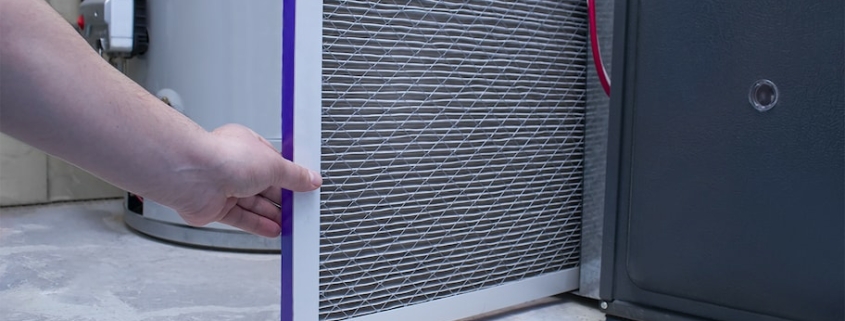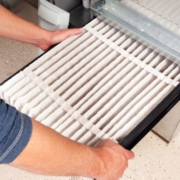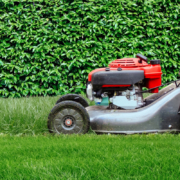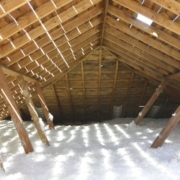How to change your furnace filter
Introduction
When it comes to the comfort of your home, there are few things more important than a properly functioning furnace filter. It keeps the air in your house clean, so you don’t have to worry about dust or other debris circulating throughout your abode. Regularly changing the filters in your furnace is essential for maintaining good air quality, but you should also make sure that you’re replacing them with the right size and type of filter. Changing out your filter regularly will ensure that it continues to work properly and protect against pollutants from entering into your home’s interior space.
Turn off the electricity to your furnace.
- Shut off the power to your furnace.
- If you have access to the breaker box, turn off that circuit breaker for a minute or two.
- If there is an electrical fuse box in your home, pull out any fuses in that circuit and leave them out for a few minutes.
- Open up the filter compartment of your furnace and remove the old filter (if applicable), making sure to put it somewhere safe where it won’t get dirty or damaged while replacing it with a new one later on!
- Carefully remove as much dust and debris from the inside as possible by brushing around with a broom handle until all visible buildup has been removed from within before installing new filter(s). Be careful not to damage any other parts like wiring when doing so though!
Locate your furnace filter.
The first step to changing your furnace filter is locating it. You will find the furnace filter in one of three places:
- In the air ducts (where warm air travels from the furnace through holes in the ductwork)
- In a return vent for an individual room or zone within your home (these are often located near windows or doors)
- In an air return (a large, box-like structure that collects and distributes cooled air throughout your home)
Remove the old filter.
- Remove the old filter.
- Unscrew the filter from its housing, and pull it out of the unit. You may have to clean off any dust or dirt that’s accumulated on either side of the filter before you remove it from its holder; this will make installation easier later on.
- Install a new one—and don’t forget to clean it first!
If you skipped step 1, go ahead and do this now: install a new furnace filter with your hands or pliers (if necessary). If not done already, wipe down both sides of the new filter for easier installation next time around. Don’t forget about cleaning off any excess dust/dirt from both sides of your current furnace and its housing unit before proceeding to Step 3 below!
Check your owner’s manual for the right size and type of filter you need.
Check your owner’s manual for the right size and type of filter you need. If you don’t know where your owner’s manual is, check with the manufacturer or ask someone who works at a hardware store where they might keep records of which filters work best with their equipment.
Install the new filter with the arrows pointing toward the blower motor.
- Make sure you have the right size filter. The filter should be slightly larger than your furnace’s air inlet opening.
- Make sure you have the right type of filter. Use a pleated or high-efficiency particulate arrestor (HEPA) filter for best results, as they are specifically designed to trap dust and other particles that may otherwise circulate through your home or office. Some filters come with center grids while others do not; if you’re unsure which arrangement is best for your home, consult with an HVAC technician before purchasing replacements.
- Make sure you have the right filters for your furnace. Don’t forget about any other heating systems in your home—you’ll also need replacement filters for those!
Replace the doors or panels on your furnace and restore power to your furnace.
- If you have a gas or oil furnace, check the pilot light first to see if it’s working properly.
- Turn on your circuit breaker and flip the main switch back on; this should restore power to your furnace.
- Wait at least 15 minutes before trying to turn on your furnace again—this gives time for all of its components to cool down and allows them to operate properly again when turned back on.
Mark your calendar for when you need to replace it next time, using a highlighter or other marker that will remind you how long it’s been since the last replacement.
Mark your calendar for when you need to replace it next time, using a highlighter or other marker that will remind you how long it’s been since the last replacement.
- Use a calendar. If there are no markings on your filter, use a pencil to mark the date of its last change in large letters on the top or side of the filter.
- Make a note on your phone, tablet or computer. A reminder might say something like “Change furnace filter” along with today’s date, or just “Filter.”
Wash out any air registers in your home that are dusty, at least once a year, more often if you have pets or smokers in your house.
Changing your furnace filter is a great way to keep your home comfortable, but it’s also important to know when you should replace it. Here are the guidelines for how often you should change your filters:
Every month – if you have pets or smokers in the house
Every 3 months – if dust is noticeable on surfaces around your house (like floors)
Every 6 months – if mold has formed on walls or ceilings
Every 12 months – if there are cracks in the paint or woodwork of your home
Every 2 years – if you have allergies, asthma or other respiratory problems that might be exacerbated by dust and pollen particles in the air you breathe; if there is visible mold growth inside; if there are signs of distress on window sills etc., such as peeling wallpaper or wallpaper curling up at edges; or if homeowners hire professional cleaning services to clean their homes more than once per year
MERV ratings aren’t everything but changing your filters correctly is essential.
MERV ratings aren’t everything but changing your filters correctly is essential. MERV ratings are based on particle size and not the type of filter.
You need to change your filters regularly.
Need help buying the correct furnace filters?
We found this site to be particularly useful when researching filter efficacy and efficiency. You can find it HERE.
Conclusion
Replacing your filter is one of the easiest ways to improve the air quality in your home. It’s also one of the most affordable and effective ways to keep your furnace running smoothly for years to come. If you’re not sure how often to change it, consult your owner’s manual or call someone who can advise you on whether it needs replacing now or later.







Leave a Reply
Want to join the discussion?Feel free to contribute!